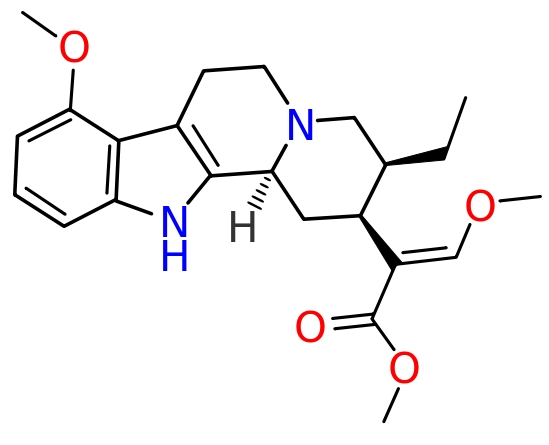Kratom has become a lifesaver for millions of people who use this plant to cope with many conditions. In fact, this Asian tree seems to have very positive effects to relieve pain, anxiety, or depression. The effects of kratom come from the action of its alkaloids; kratom leaves contain around 40 alkaloids, but the most abundant one is mitragynine. In this article, we will explore the properties of mitragynine. What does it do? How does it work? What does science say about it? Keep reading this post to find the answers.
What does Kratom Do? Kratom and Its Alkaloids
Kratom is a tree that grows in Southeast Asia. Its scientific name is Mitragyna speciosa. From a botanical point of view, kratom is in the Mitragyna genus, which is part of the Rubiaceae family (the same as coffee). Also, it is an evergreen tree, which means that it has green leaves all throughout the year.
Two centuries ago, people living in Thailand or Indonesia used to chew fresh kratom leaves in order to fight fatigue or relieve pain. However, finding fresh leaves of kratom outside the jungles of Indonesia is very difficult, unless you have your own kratom tree. Hence, local farmers collect and dry kratom leaves that are then exported worldwide.
Kratom active elements are mostly alkaloids that act on the mu and delta receptors in your body. Thus, kratom can trigger the following effects:
- Pain relief
- Euphoria
- Relaxation
- Stimulation
- Focus and concentration
- Sedation
The most abundant and potent kratom alkaloids include mitragynine, 7-hydroxymitragynine, mitraphylline or paynantheine. However, not all kratom types or strains contain the same distribution of alkaloids. Depending on the kratom type, strain, environmental factors or the maturity of the leaves, the number of alkaloids that a kratom leaf contains may vary. In any case, mitragynine will always be the most prevalent kratom alkaloid. Below, we will deal with the properties of mitragynine, which is the most prevalent kratom alkaloid.
Mitragynine: Basic Scientific Facts and History
Mitragynine is the most abundant kratom alkaloid (between 60 and 70 percent of the alkaloid content of the kratom leaves). With regards to the scientific facts of mitragynine, we can say that its molecular weight is 398.5 grams per mole and its molecular formula is C23H30N2O4. Also, mitragynine is a lipophilic alkaloid. That is, mitragynine can dissolve in lipids or fats. Hence, you can combine kratom and milk without fear of losing the properties of kratom.
Before discussing the properties of mitragynine, let us take a look at its history. Mitragynine was first isolated by D. Hooper back in 1907 when studying the leaves of kratom. Hooper also mentioned that M. speciosa could be a potential substitute for opium (and, therefore, may be a potential cure for opium addiction). However, although Hooper managed to isolate mitragynine, he did not give it a name. It was not until 1921 that Field isolated this alkaloid again and named it mitragynine. But although the name “mitragynine” clearly comes from mitragyna, Mitragyna speciosa (kratom) is the only species in the Mitragyna genus that contains this alkaloid.
Different studies that took place in the 1930s and the 1970s proved that mitragynine had depressant and analgesic properties. Nowadays, you can find many other studies focused on the properties of mitragynine and the other kratom alkaloids.
Properties of Mitragynine
Mitragynine acts on some of the opioid receptors in your brain, especially in the kappa, delta, and mu receptors. While these receptors get this name because opiates and opioids attach to them, kratom is not an opioid.
But mitragynine may also inhibit the formation of cAMP (cyclic adenosine monophosphate), a kinase (a type of enzyme) that seems to be linked to the development of pain. Also, the effect of mitragynine on the mu receptor, which is an opioid receptor that regulates pain, also increases the analgesic properties of mitragynine.
But we cannot forget about the antidepressant properties of mitragynine. Due to its characteristics, mitragynine could also exert an action in serotonin. Serotonin is a neurotransmitter that seems to be key in mood regulation. That is why the majority of medical anti-depressants act as selective serotonin reuptake inhibitors (SSRIs). That means that these drugs block the reuptake (or absorption) of serotonin after the neurotransmitter has done its job, so to speak. Furthermore, serotonin also seems to play a very important role in cognitive functions. Hence, many kratom users report that kratom is helping them improve focus and enhance concentration. Moreover, according to anecdotal evidence, kratom could also boost your creativity and increase productivity.
Finally, mitragynine produces 7-hydroxymitragynine during metabolism. While 7-hydroxymitragynine is not among the most abundant kratom alkaloids, it is still one of the most important kratom constituents due to its properties. 7-hydroxymitragynine is perhaps the most potent kratom alkaloid when it comes to pain relief and relaxation. So, its potency (or rather its effects) may also increase because its prevalence may be higher after absorption than what raw leaves contain.



